Let us get straight to it. The AMD EPYC 7F32 is an 8 core CPU that is focused on per-core performance. For around a 265% premium one gets a 500MHz base and turbo boost increase over the more mundane EPYC 7262. In this market, that is exactly the point as this is one of AMD’s frequency optimized SKUs. While the EPYC 7F52 had the EPYC 7371 parallel from Naples to Rome, the EPYC 7F32 competes in a market that AMD could not compete in just a generation ago. In our review, we are going to see what that means in terms of performance compared to the other AMD EPYC parts, but also the Intel Xeon Gold competition.
AMD EPYC 7F32 Overview
Key stats for the AMD EPYC 7F32: 8 cores / 16 threads with a 3.7GHz base clock and 3.9GHz turbo boost. There is 128MB of onboard L3 cache. The CPU features a 180W TDP. These are $2,100 list price parts.
Here is the lscpu output for the AMD EPYC 7F32:
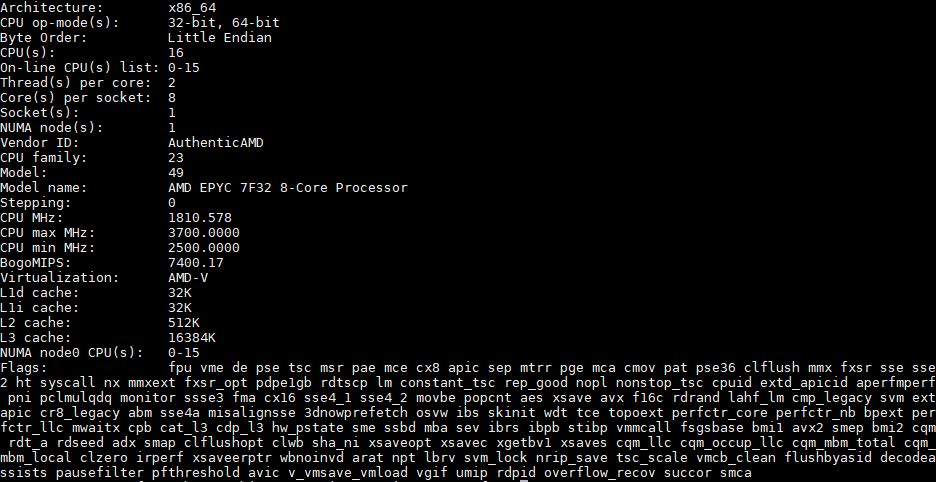
Perhaps one of the biggest changes is the TDP. Compared to the AMD EPYC 7262 we get 35W more TDP or almost 4 watts per core more TDP headroom that helps power a 500MHz or an almost 16% increase in clock speed per core at base clock speeds.
Unlike previous generation parts such as the EPYC 7251 this is a single NUMA node part. Each EPYC 7251 was a four NUMA node part with two cores per. Realistically, that meant AMD did not have a great product to focus on the per-core performance market which was further hindered by lower clock speeds. In the AMD EPYC 7002 series “Rome” generation, AMD now has an architecture that can go head-to-head with Intel.
To illustrate this, here is the topology of the EPYC 7F32:
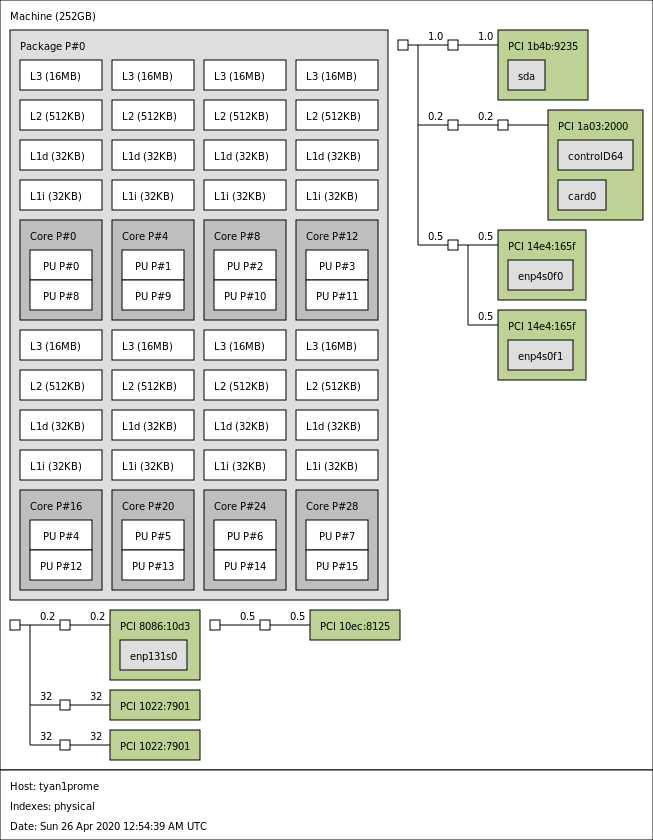
One can see a single NUMA node here. One can also see that each core has two threads along with the 32KB L1i + L1d cache and its own 512KB of L2 cache. The magic happens with the L3. Each core gets its own 16MB L3 cache chunk. In comparison, here is the chip’s main competition the Intel Xeon Gold 6250:
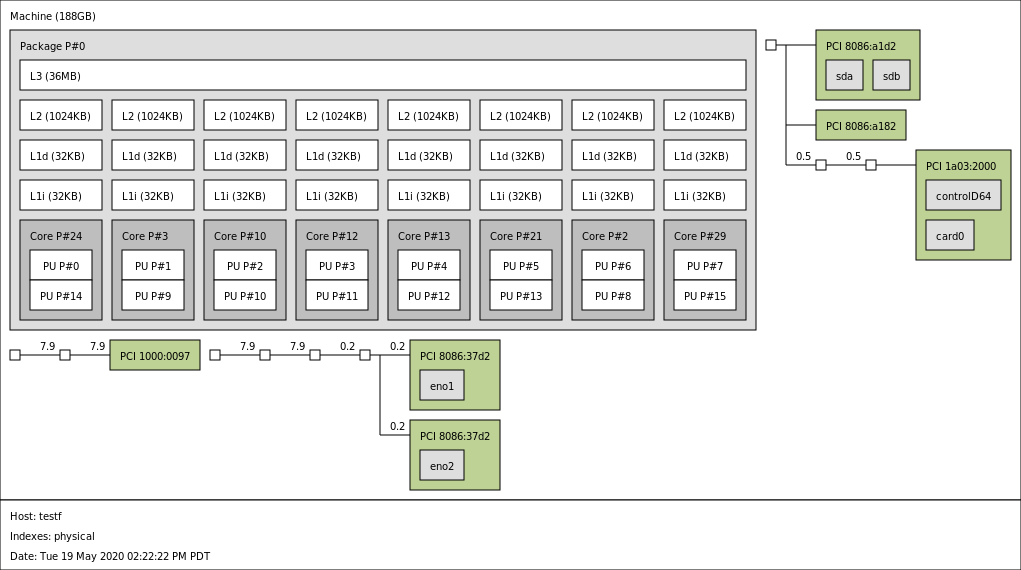
Here we can see a larger 1MB L2 cache but a 35.75MB shared L3 cache. While AMD has 16MB of L3 cache aligned to each core for 128MB in total, Intel has 35.75MB cache in extra chunks that are spread among 26 shared 1.375MB chunks on the Intel fabric.
Putting this part into some context on the AMD side, here is what the new 8-24 core, dual-socket capable SKU stack looks like from AMD.

As you can see, these new 7Fx2 chips offer strikingly higher TDP and significantly higher prices per core than alternative options along with their clock speeds. AMD is able to do this because they are offering significantly more performance per core. Here is AMD’s slide with the above subset of CPUs showing its competitive impact using dual-socket SPECrate2017_int_base which is a widely used benchmark for data center purchasing.
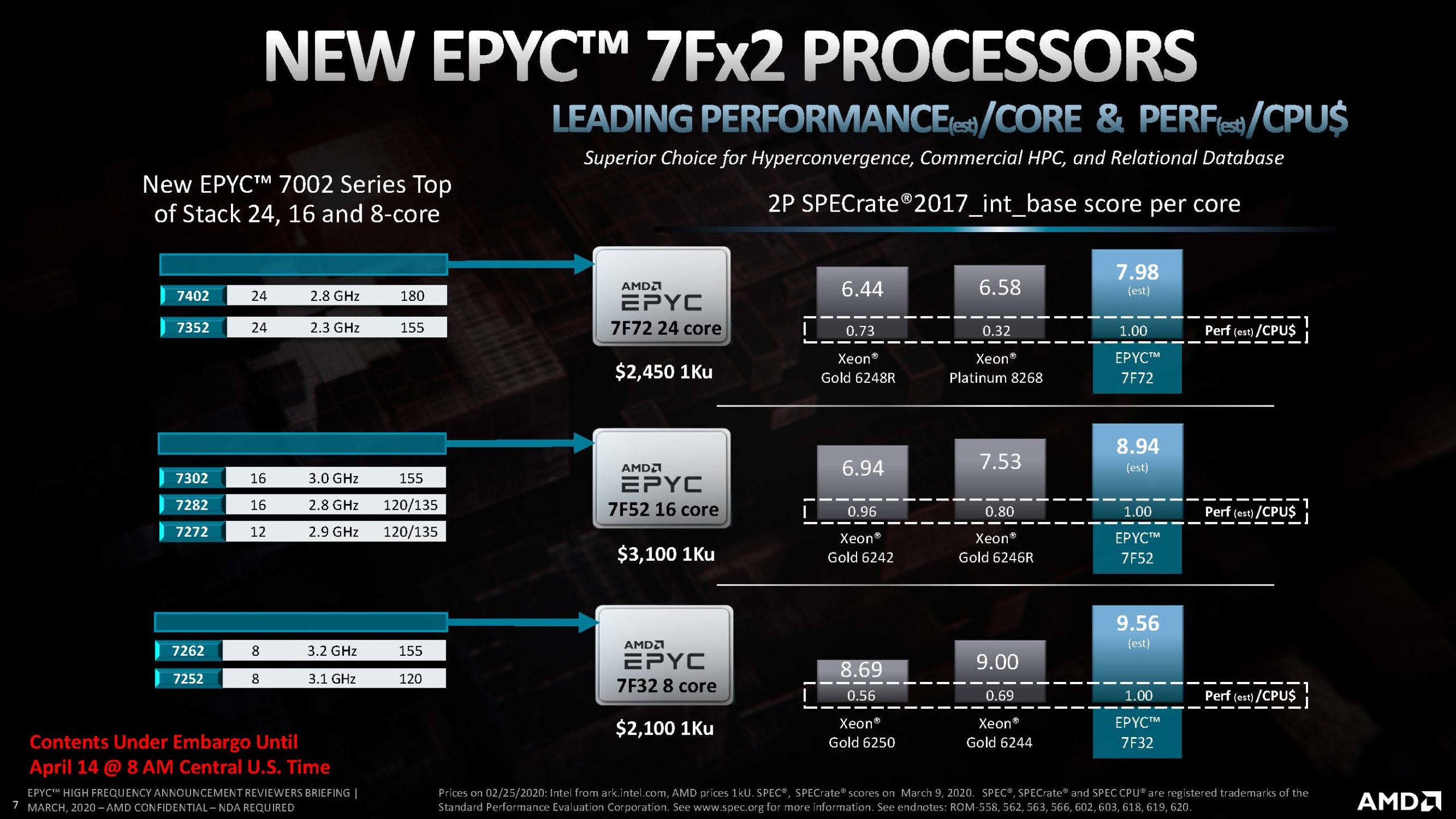
Here AMD is aiming for leadership performance, as well as leadership performance per dollar. We are going to discuss this more in our market impact section, but let us be clear, AMD is now extracting a premium for this capability. Here are the new SKUs in context of other AMD EPYC SKUs on a $(USD) list price/ core basis:
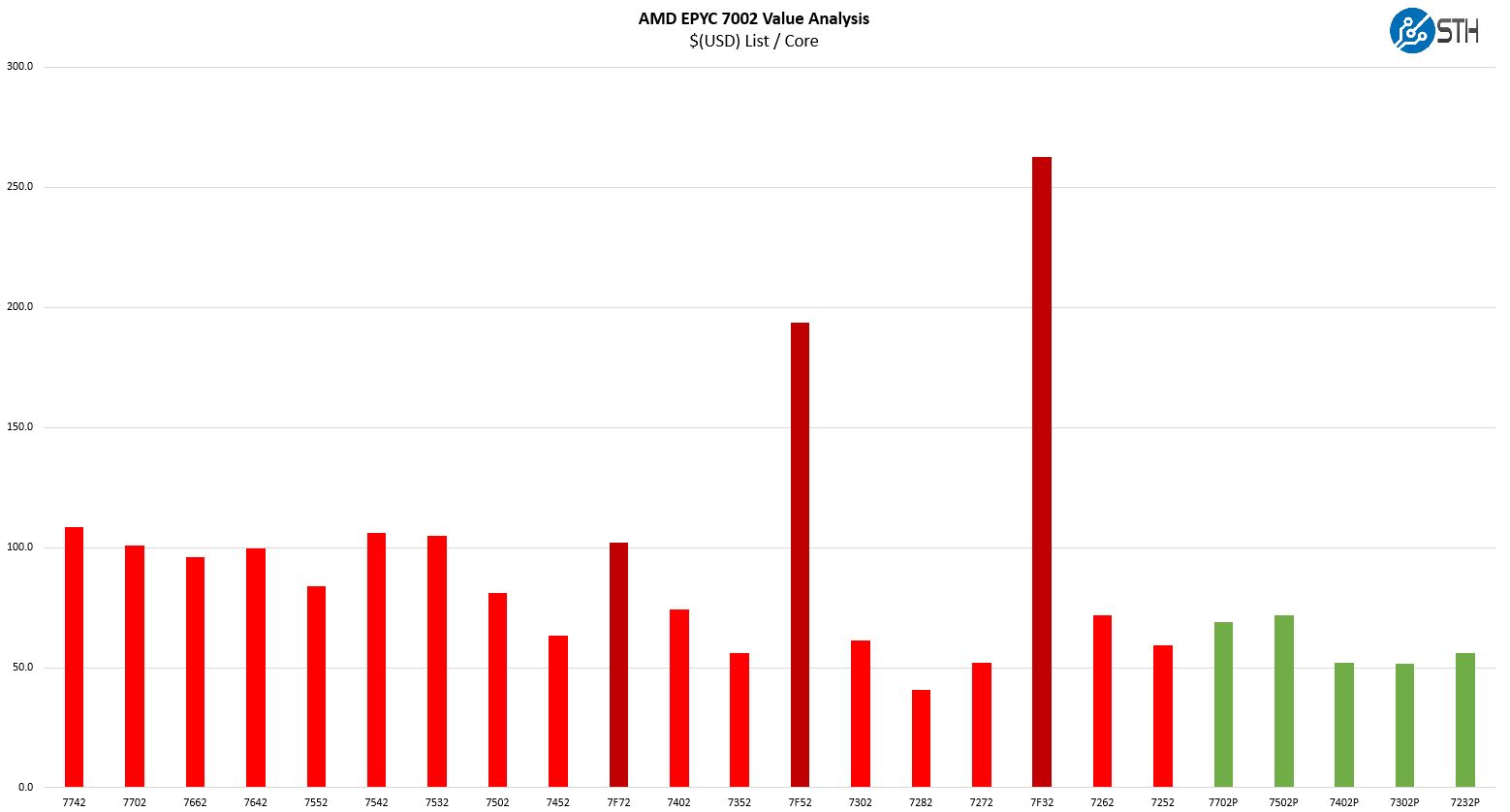
As one can see, the 7F32 is comes in at $262.5 per core. We do not think that the “262” here is a nod to the fact this is, in some ways, a higher-end EPYC 7262. It is likely just an arithmetic coincidence.
In our benchmarks, we are going to see what this premium offers. First, we are going to take a look at the test configurations and how we received the chips.

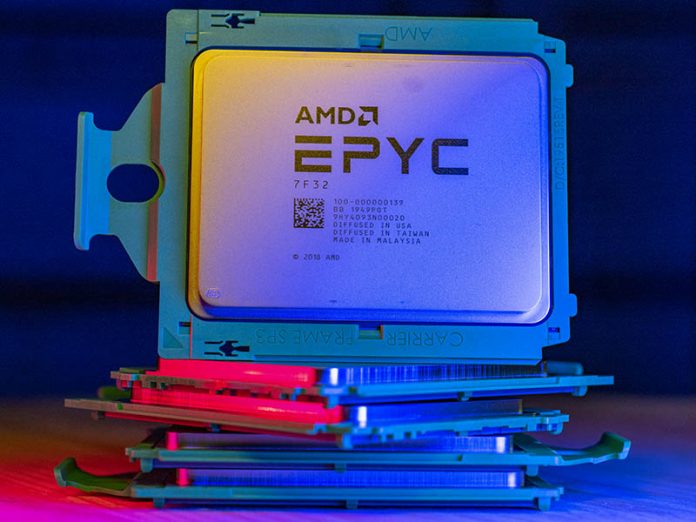



‘F’ is for ‘F-ing confusing’ names.
I like including the HPE numbers. You’re using a Gen10+ for AMD but I get why. You’re basically making the point for why you would in the editor’s note.
We are considering the 7F* models despite the price premium. When your license costs (vastly) dominate your hardware costs, peak per-core performance can rule the day. We’re looking at 7F32 for our critical workloads that gate delivery to manufacturing, and 7F72 for volume workloads as a nod to datacenter space constraints.
Your pg.4 analysis is spot on.
I agree with @HansF1973.
The candor of the product/market analysis on page 4 is refreshing to see in a review article.
I’ve read too many review articles elsewhere that are little more than blah cheerleader material.
3.9 GHz on 8 cores for …how much???! $2100? Those will likely gather some dust on assorted shelves…(too pricey, IMO)
Sadly the processor cost is nothing compared to the licensing fees on a couple of dozen programs, see: https://glennsqlperformance.com/2020/05/20/recommended-amd-processors-for-sql-server/ .
If you are entangled it’s probably worth paying to dig your way out and move to PostgreSQL, MySQL or another open source solution: https://db-engines.com/en/system/Microsoft+SQL+Server%3BMySQL%3BOracle%3BPostgreSQL – though in some cases running under a VM with fewer cores is an option the pain comes when the fine print says that the Enterprise edition must be licensed for a minimum of 16 cores, so it’s twice as bad as first thought.
In some cases (Maya, Ansys, others) there is ‘no’ alternative, trying to get something to look like Maya is an Art in itself, and some things are simply the accepted Standard (a selling point, in a service being offered).
In a narrow set of cases it’s not just the higher clocks and larger cache but also the larger memory, even the reliability; leaving dreams of ThreadRipper short lived and the longevity of Intel solutions better understood (look at the difference in price of the whole, not just a single part).
Still, these processors would need to be more than half as expensive to appeal to me; and I can afford to wait to see what next year brings us.